
By William C. Shelton
Last week the Dormition of the Virgin Mary, Somerville’s Greek Orthodox Church, celebrated another milestone in its century-long mission of communion and community. Although the Church has been planning a renovation for six years, a September 2021 a fire resulted in extensive smoke and water damage to the church’s interior and its electrical system.
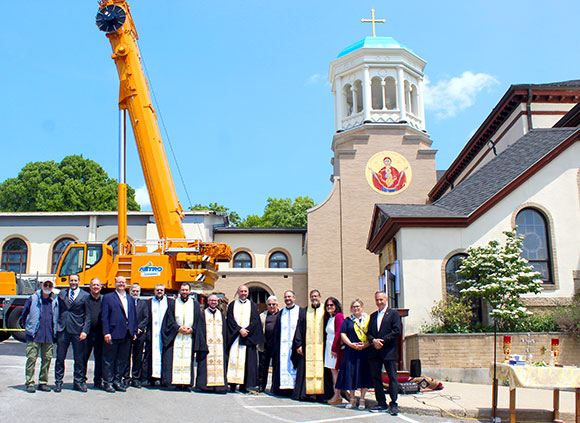
~Photos by Harry Agritha.
Church members, their pastor Father Tandilyan, and their real estate development team determined to transform the Church building. Results of their $6 million investment were on glorious display Friday, when they mounted a Byzantine cupola and crowned it with the Cross. The cupola will serve as a bell tower, and as an elevator that will make all levels accesible.
In Father Anthony’s words, “The most important thing is that the community came together. Historically the Christian community comes together around the cross to glorify God and to elevate his cross.”
He went on to say, “The community is the Church. The community preserves the Church and the Church preserves the community.”
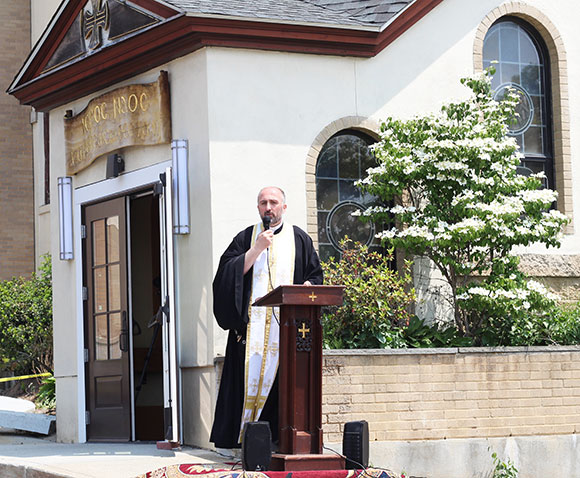
Indeed, it has been so since the first Greek immigrants arrived in Somerville. They came from Alatsata, a town settled a millennium before Christ. Others followed from Filiatra, on the Mediterranean.
The Ottoman Empire had conquered Greece in the mid 15th Century. But in 1821 Greeks declared their independence. Many Europeans and Americans saw Greece as democracy’s birthplace, and some joined the revolution. After eight years they liberated southern Greece’s mainland and most of its islands.
The Greek people who initially came to Somerville were mostly men, driven here by a devastating agricultural depression and escaping conscription into the Ottoman army. They settled primarily in the Brickbottom neighborhood, but also in West Somerville. They found work in Boynton Yards’ four meatpacking houses. Most intended to earn some money, send it back home, and return.
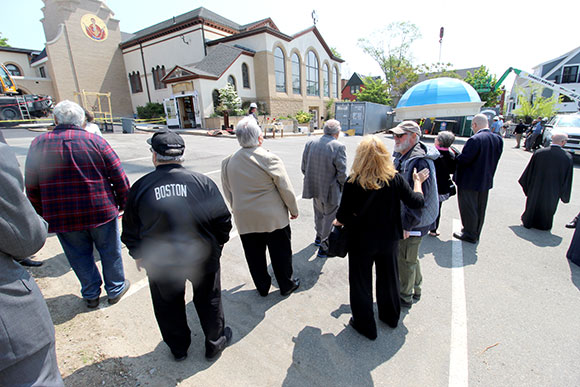
The Balkan wars of 1912 and the resulting persecution and expulsion of Greeks discouraged most from returning, while encouraging young Alatsatan men and women to immigrate here. In 1916 they rented a Union-Square hall over what was then a Woolworth’s store and is now the location of Goodyear Tire. This was Somerville’s first Greek Orthodox Church. Its parishioners supported it with 50-cent-per-month dues.
During that year a 20-year-old Somervillian from Alasata was serving with the U.S. Army after a stint as a freedom fighter. He returned to Somerville following his discharge, but months later rejoined the army to fight in World War I.
In Belleau Wood, he single-handedly attacked a German machine gun emplacement. With his right leg nearly severed, he forced the surviving machine-gun crew to retreat. He became the first Greek American to receive the Congressional Medal of Honor, and our city’s largest athletic field is named for George Dilboy.
Warfare between Greeks and Turks in 1922, following the Armenian genocide conducted by the Ottoman Empire, spelled the end of many immigrant dreams of returning home. Instead, they made Brickbottom what the sociologist Herbert Gans called an “urban village.”
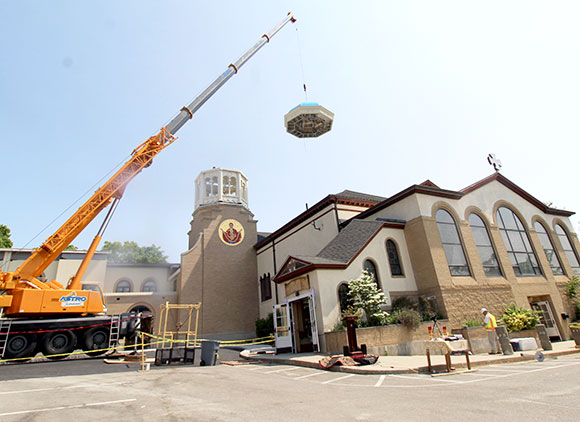
When the meatpacking plants closed, workers’ barracks became low-cost housing, kept spotless and well-repaired by their Greek American residents. Pushcart vendors and horse-drawn teams hawked fish, bread, vegetables, fruit, house wares, and clothing. Children playing, neighbors chatting, and festival celebrations filled the streets.
In 1923 the community built its first freestanding Church at 217 Somerville Avenue. It was the center of community life, organizing dances, musical bands, sewing classes, picnics, trips to the beach, games, July 4th bonfires, a Greek-language school, and citizenship classes.
When the Italian fascists invaded Greece in 1940 the community turned its focus to war-relief efforts, while sending 260 of its young men to fight. In 1947 the Church bought what was then the Elks Hall at 29 Central Street. It had originally been owned by Columbus Tyler, who had built a home there for his bride, the Mary of “Mary had a little lamb. In 1965 they razed the old Elks Hall and dedicated a beautiful new church.
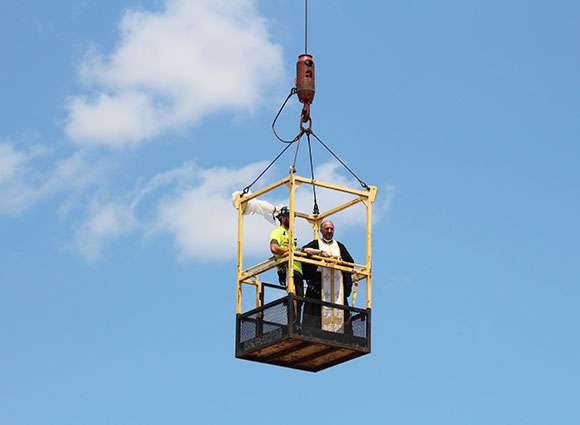
From 1950 to 1970 Somerville’s population declined by 36,000. The lure of the suburbs pulled many residents away. Factory closures pushed others. A new influx of Greek immigrants replaced some. They came primarily from the mainland, and particularly after the 1967 military coup.
Departing parishioners often became church leaders in Woburn, Arlington, Lexington, Andover, and other communities. The deep commitment and rich sense of community that they brought with them proved to be inspiring and infectious. Many of the faithful throughout New England consider Somerville to be their mother church.
And many were present Friday, along with clergy from the surrounding communities, led by Rev. Fr. Theodore J. Barbas, Chancellor of the Boston Metropolis. They marveled over the brilliant new icons produced as part of the restoration. Parish Council President Diane Karavitis welcomed all honored guests, among whom were Greek Consul General Symeon Tegos and Somerville Mayor Katjana Ballantyne.
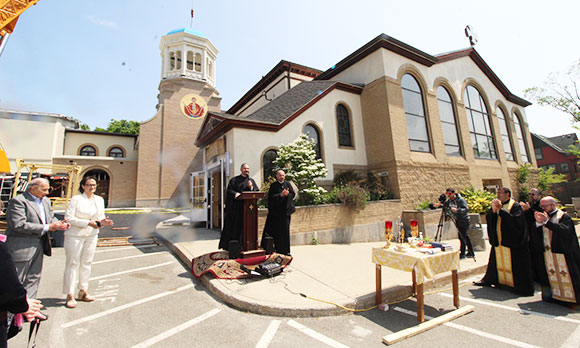
Iconography depicting the holy family, saints, and biblical events flourished in the two centuries after Jesus walked the earth. Following the Eleventh-Century schism between the Roman and Greek Churches, Roman media emphasized statuary, which the Eastern Church associated with paganism. But the continued development of Orthodox iconography is on breathtaking display at the Dormition Church.
In addition to enhancing worship, Father Anthony sees the icons as a means of sustaining community and communion with God. Congregants were asked to choose which of their patron or favorite saints they wished to memorialize, and each was dedicated by a parishioner as an expression of their love and generosity.
They call them their “windows to Heaven.” And I certainly felt closer to Heaven when I was among them.
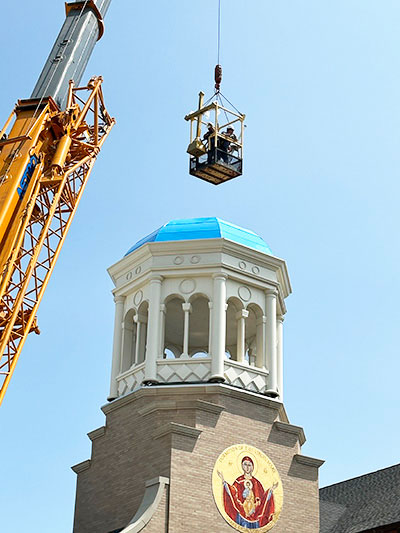
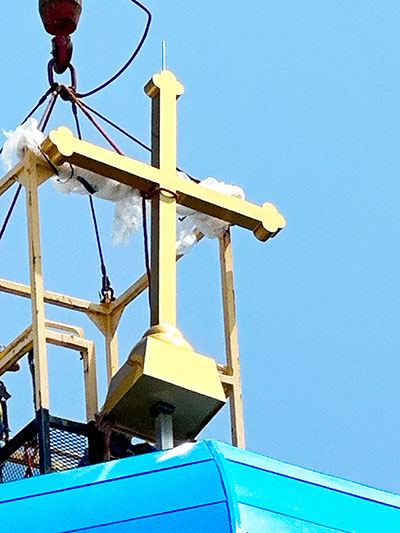
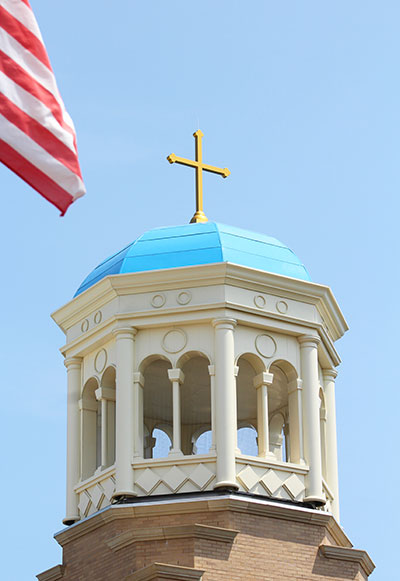













Bill, this was a fantastic and exceptionally well-researched piece on the history of the Greek people in Somerville , the revitalization of the Church – and more broadly on Greek history. We, so often, walk by reminders of history such as the George Dilboy statue (not to mention the field) without knowing the story behind these community icons – so thanks for elucidating. I believe that Hitler’s joining of Mussolini in invading Greece (where they were strongly repelled) might have been the blunder that cost him the war by distracting resources from the Russian front – so another contribution to be honored from Greece in preserving democracy. Thanks for writing this article – again, really well-done! HH